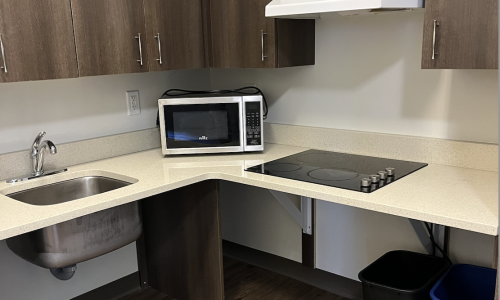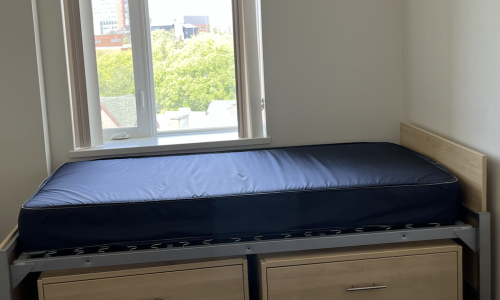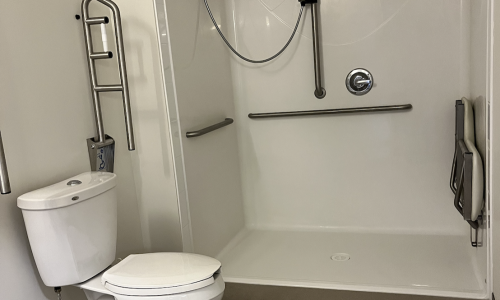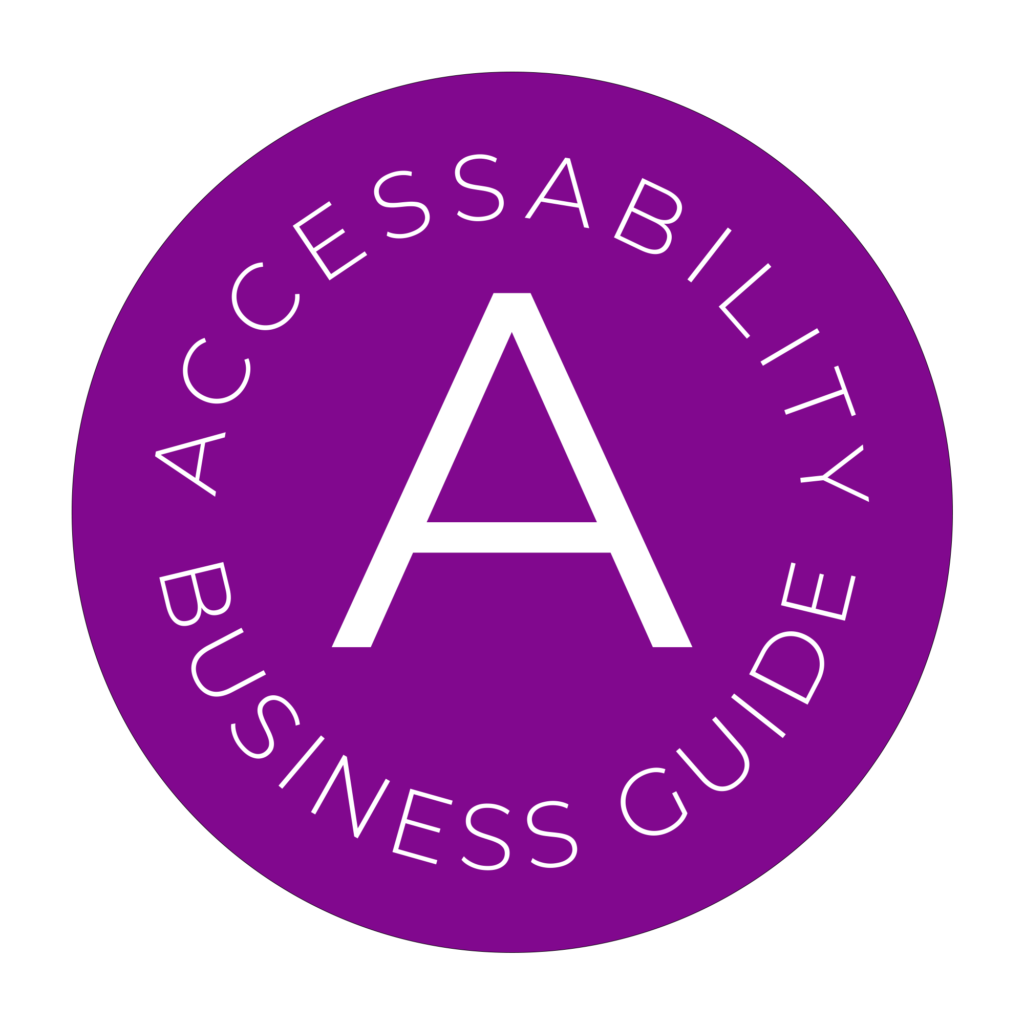Attending post secondary can be an exciting time, but it can also be a large adjustment and brings upon many stressors. For people with a disability there can be added stressors, barriers and considerations.
I had the opportunity to speak with the Services for Students with a Disability team at Northern Alberta Institute of Technology (NAIT), a post secondary institution in Edmonton, Alberta. NAIT has upwards of 30,000 students per year, and during the 2022/23 school year 1864 students accessed the Disability Support Services. Gifty Amakye and Wendy Marusin at NAIT Disability Services say approximately 7-12% of NAIT students self-identify with a disability. Many post secondary institutions offer Disability Services and will often have a dedicated office for people with a disability (PWD). At NAIT the Disability Services office can help with a range of services including: advising, support with accessing grants specific to PWD, learning strategies, adapted learning methods, communication support, note taking, academic support aids, exam accommodation services and they even recently opened their Assistive Technologies Centre- which offers a range of supportive equipment that students can test out, and they even have some available for loan to students. Wendy talks about how having an inclusive learning environment that helps to decrease stigma “helps foster belonging for students and create greater understanding of differences and diversity” (Marusin). This is a great example of how accessibility and inclusion not only benefit those with a disability, but society as a whole!
Amakye and Marusin say that some of the major barriers that the students they support face are; the stigmas experienced, Marusin says that “sometimes students won’t reach out for support in advance because of the stigma”.. Another barrier is adapting to a new learning environment, many students coming directly from the school system may have had individual aids, IEPS and additional support. Post secondary schooling lends an opportunity to gain independence, but along with this, it can cause additional stressors and barriers. The built environment may not be fully accessible and sometimes having to self-advocate to receive services. NAIT has a great attitude towards accessibility and they recognize that their campus is not going to be fully accessible for everyone, but they see accessibility as “a journey, not a destination, there is always room for improvement” (Amakye)
At another Post Secondary Institution in Edmonton, The University of Alberta, there is St. Joseph’s Women’s Residence. In the heart of the campus, St Joseph’s Women’s Residence has student accommodations with accessible rooms. They were kind enough to give me a tour to check out the features! The proximity to the rest of campus is a huge bonus, the transit center is right nearby and paved pathways throughout campus lead to the other buildings, and if you know Edmonton- you know it gets cold- the campus even has a collection of pedways between buildings so you don’t need to venture into the -40 C weather. Inside the residence, there are accessible rooms that feature roll in showers, grab bars in the bathrooms, roll under sinks and lowered appliances! The doorways are widened to accommodate mobility aids! The fire alarms are both audio and visual to accommodate different needs of the residents. If a student requires a live-in aid, the residence offers a discounted rate for the aid to have the secondary bedroom. One cool feature is that the elevators have special sensors that make the elevator available in a fire, the sensors stop the elevator from stopping on any floor that has fire. This is a handy feature since the building is 7 stories, so the potential to be able to exit the building in an emergency without having to wait for emergency services to evacuate, is a huge safety feature!

These counters and appliances support folks that need to utilize that space to roll underneath unobstructed.

The storage drawers can be easily moved so under the bed is available for a lift or other equipment to roll under.

The bathroom has a roll in shower with grab bars and a fold down bench, as well as fold down grab bars at the toilet. Not shown is the roll-under sink.
To gain a fuller picture of the Post Secondary experience of students with a disability, we spoke to two students who have, or are currently attending post Secondary institutions to learn about their experiences!
We spoke to Jessica Zacharias, who has Autism, dysgraphia, balance issues and coordination struggles. Jessica has attended Selkirk College and is now attending University of British Columbia Okanagan (UBCO) Campus studying Psychology. Jessica shared her current experiences at UBCO as a student with a disability. She described the accessibility of the campus as not fitting her needs well- there were not many ramps, and she struggles with using elevators. She also found it challenging to find quiet spaces- even in the library, which caused sensory overwhelm for her. Jessica did access the Disability Services at the campus and they were able to offer support tailored to her needs in classes and exams. She found the services helpful, but stated that the professors were not very accommodating. She says if she had to give any advice to incoming students it would be that “you are going to need to be a strong advocate for yourself, you might have to fight for your accommodations, but in the end try your best and enjoy it as best as you can”.
Another student Uswa Habib attended two universities in Ontario, the University of Toronto St George for her bachelors of Equity and Economics and is currently attending The University of Toronto Mississauga for her Masters of Accounting. Uswa has ADHD and Bipolar disorder. She was willing to share her experiences as a student. She was able to access the Disability Services office at her schools to get accommodations for assignments and exams, which she said were helpful to her. Her suggestions to incoming students would be to reach out to the Accessibility advisor and ask for help! “You deserve it and you would be surprised at how much they can offer” Uswa said she didn’t personally find physical barriers in the built environment affecting her, as her disability is not physical, but she noted that there was often construction on campus so it would be a challenge for those that may have physical disabilities. One of the challenges Uswa experienced was the overstimulation in the school environment, especially during group tests, with the support of the Disability Services, she was able to get accommodations to take tests in a private room.
While there is still a long way to go, as evidenced by Jessica and Uswa, it is uplifting to see that Post Secondary Institutions are keeping accessibility and disability services at the forefront. As Gifty Amakye at NAIT said “it is a journey not a destination”. This journey is one that will continue to evolve as technology advances and awareness is raised. It is my dream that one day all PWD who wish to attend Post Secondary have the opportunity to do so in a safe, inclusive, equitable and supportive environment without barriers.
Have you had any experiences, positive or negative with Post Secondary Education as a PWD? We would love to hear from you! Feel free to reach us at megan@accessabilitybg.com to share.
